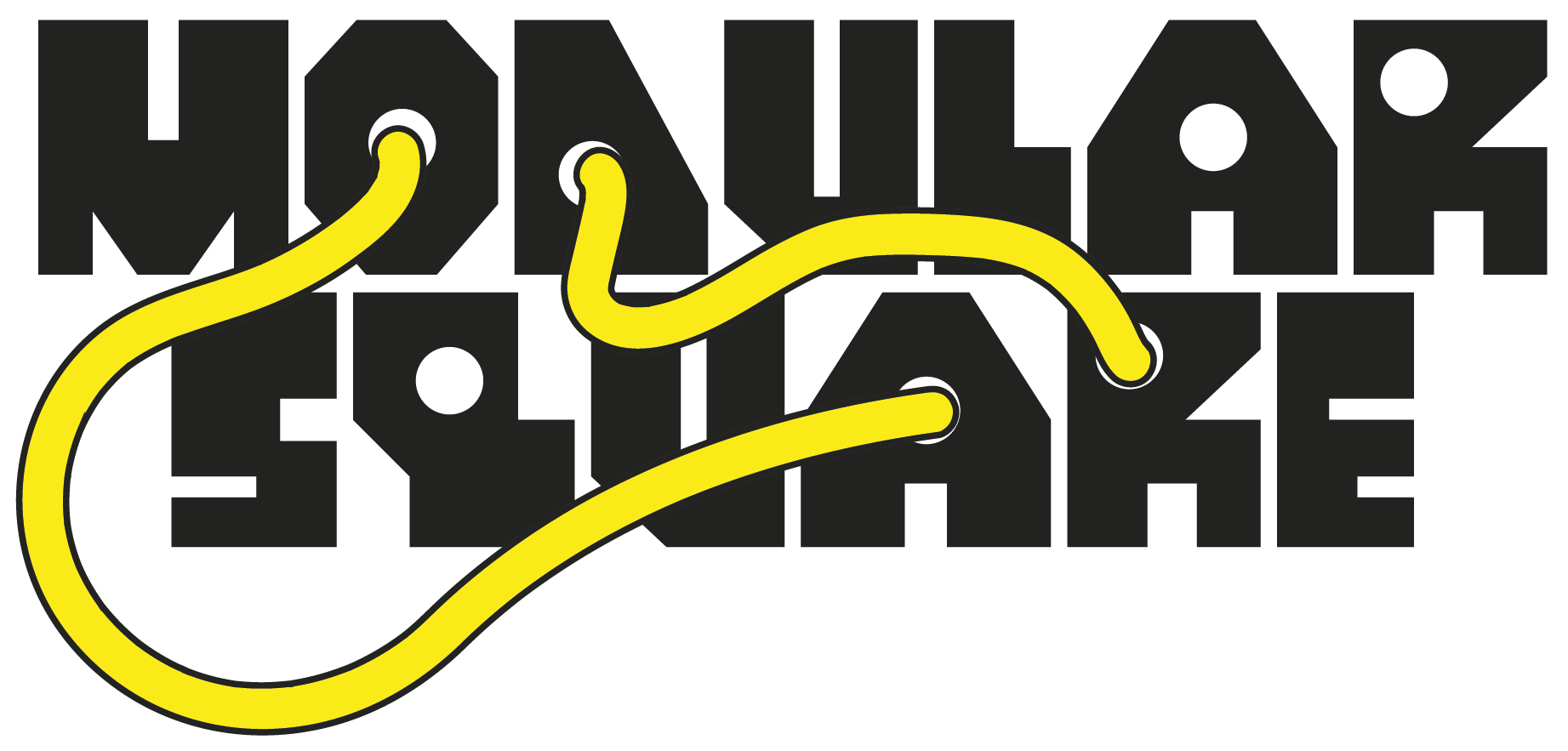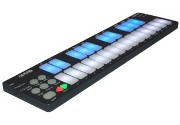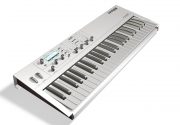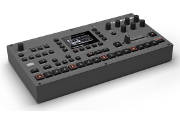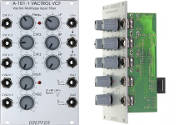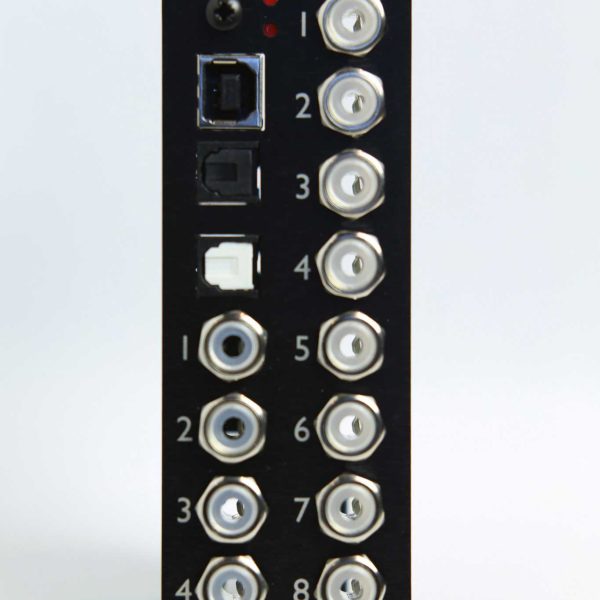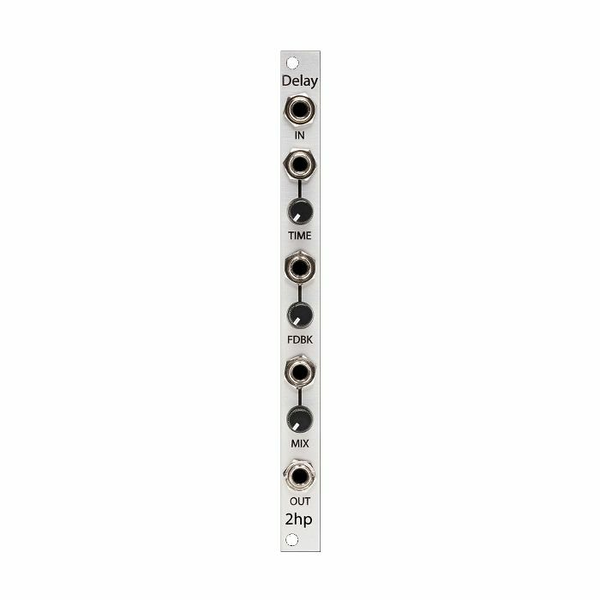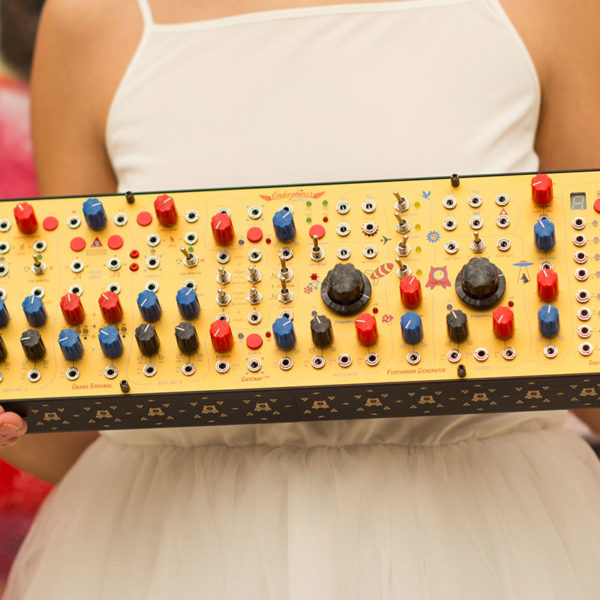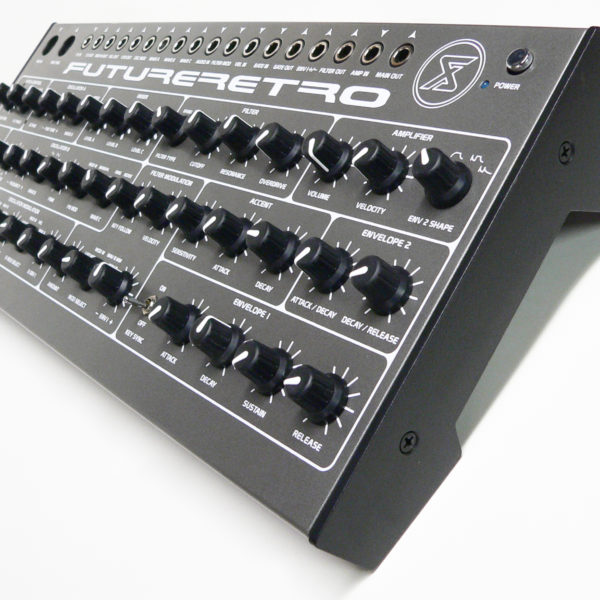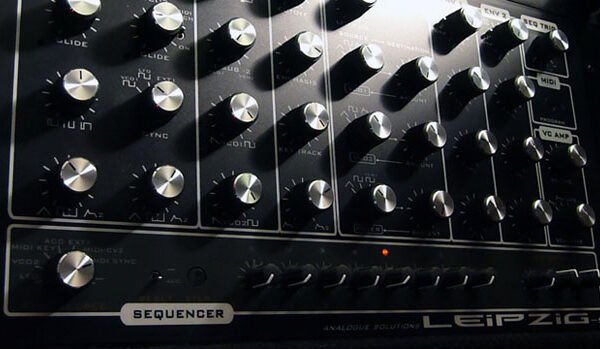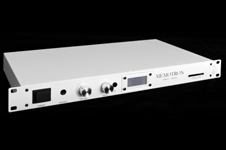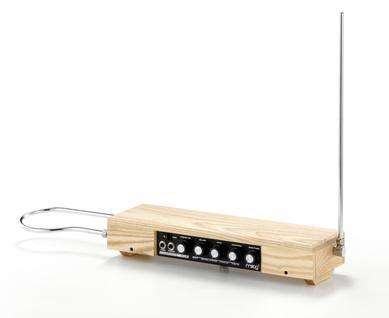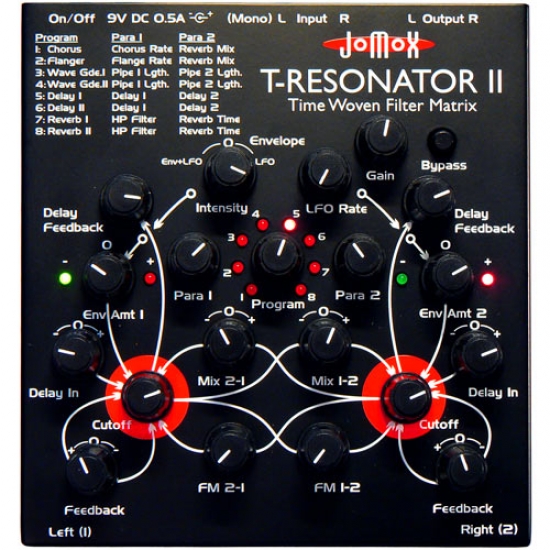Easel Retro – ON ORDER
The absolute classic returns! For its 50th birthday, the Buchla Music Easel synthesizer returns in the retro version.
5 598,00 € TTC
ON ORDER
The absolute classic returns! For its 50th birthday, the Buchla Music Easel synthesizer returns in the retro version.
Except for a few small changes here and there, it is very much like the original – an extremely well-thought-out instrument with great sound and sensibly placed patch points. This Retro Version strikes with the classic design in the suitcase, with the beautiful Rogan poti caps. The left panel is for connectivity. There’s a MIDI in and out, and you can access the 208C and 218e V3 via separate USB-C ports. The USB port on the 208C is used to connect to the program manager and on the 218e V3 it is possible to install new firmware. There is a ground output, an input for a sustain pedal and two audio outputs. Finally, a connection for a lamp is also available.
The small sequencer and the touch keyboard with integrated arpeggiator invite you to play the instrument directly and to interact with it, which is great fun and can create interesting polyrhythmic patterns. When synched to MIDI the arpeggiator rate control acts as a clock division control and allows for triplets and other divisions.
At first glance the Easel looks challenging because of the many switches, faders and many sockets, without labeling, but in the end everything makes sense and it’s laid out very logically. The colors of sockets mostly match the function blocks of the Easel (purple = keyboard pressure, yellow = pulser, white = random, orange = envelope, blue = sequencer). The black sockets are CV inputs that are always located on the left of the according parameter. The sockets at the top of the unit have labeling and are self-explaining. The position of most banana sockets below the faders has been chosen for the use of shorting bars instead of patch cords which enhances clarity of your patch.
The sound generation of the Easel is based on a complex main oscillator and a modulation oscillator. The latter is generally used for modulating the main VCO but it can act as a second VCO and it can be routed into the 2nd Lopass Gate, see below.
The main oscillator can be tuned over 5 octaves with the frequency fader and the response to incoming CV can be changed with the +/- polarity switch. The waveform is depending on the controls in the timbre section: With timbre fader and waveshape potentiometer set to zero we will hear a sine wave. Turning up the waveshape potentiometer the waveform blends from the sine to a triangle, square or needle pulse, depending on the switch. The timbre fader modifies this waveform by the use of a wave multiplier for sounds with high harmonic content.
The modulation oscillator has no timbre section, only switchable waveforms (saw, square or triangle). In HI mode it’s a VCO, in LOW mode it’s a LFO. Its frequency can be modulated also by the keyboard (switchable) or a CV. A switch determines how the modulation oscillator affects the main oscillator, either as a ring modulator, amplitude modulation or frequency modulation. The modulation intensity is set with the modulation fader but can be voltage controlled, too.
The oscillator(s) are processed with the Lopass Gates (LPGs). Those are vactrol-based circuits with organic behavior and can operate as lowpass filters, as VCAs (gate) or as a combination of both. The audio signal for the 1st LPG is always the main VCO. The second LPG is 180° phase shifted and has a flexible routing: either output of LPG1 (what creates highpass sounds due to the shifted phase), the modulation oscillator or an external audio signal. The outputs of the LPGs are mixed in the output section and their levels can be set separately. Behind the mixer there’s a real spring reverb with dry/wet control providing more depth in the Easel´s sound when desired.
The Easel can be played with the touch keyboard and/or the sequencer. The keyboard senses the amount of skin touching it, resulting in a pseudo pressure sensitivity. It has a range of 2.5 octaves but you can transpose octaves with the four pads on the top right. While normal playing it senses one finger that determines the pitch, but when using the internal arpeggiator all fingers are analyzed. The arpeggiator has its own tempo control and can be synced to MIDI.
The Pulser is an impulse generator you can use as a clock source or as a second LFO. It can self-repeat or be triggered by key gate or the sequencer. The envelope is an AD or a ASR type, depending on the setting and can be triggered by the pulser, sequencer or the keyboard gate. The analog sequencer has three, four or five steps and features per step gate switches; it´s gate source can be the pulser or the keyboard gate. Interaction of the switch settings and the simultaneous keyboard play can result in really interesting poly-rhythmical structures.
The four touchpads mentioned above can´t only transpose the octaves; in “preset” setting four pre-set fixed voltages can be played to alter the pitch or other parameters.
For the 50th anniversary, the Easel is available in three versions. This retro version, the modern version and the 50th Anniversary Collector’s Edition.
